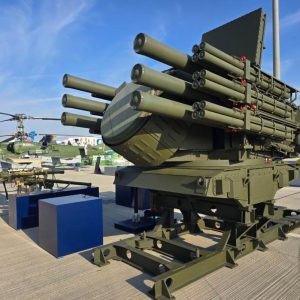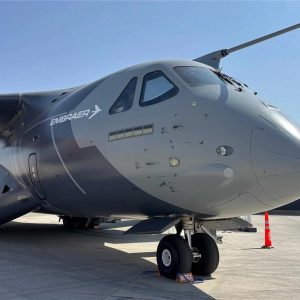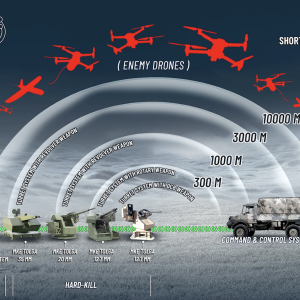Anduril has opened a purpose-built 7,400 m² manufacturing facility in Sydney. The site will scale production of the Anduril Ghost Shark XL-AUV for the Royal Australian Navy (RAN). The opening also marks a key milestone: the first production Ghost Shark rolled off the line ahead of schedule. It now enters sea acceptance testing, with delivery planned for January 2026 [1][2].
The plant begins with low‑rate initial production and targets full‑scale output in 2026. In addition, a supply chain of more than 40 Australian SMEs provides components and sub‑systems [1][2].
Key Facts
- Facility: 7,400 m² Sydney site, optimized for Ghost Shark and its commercial baseline, Dive‑XL [2].
- Contract: Five‑year, A$1.7 billion Program of Record to deliver, sustain and further develop a large fleet of Ghost Sharks [1].
- Schedule: First Anduril Ghost Shark XL-AUV off the line ahead of schedule; sea trials now; first RAN delivery planned for January 2026 [1][3].
- Industrial Base: 40+ domestic suppliers; facility jobs expected to scale with full‑rate production in 2026 [1][2].
Why this factory matters: sovereign undersea mass
This factory turns a three‑year sprint into a sustained fleet program. The Anduril Ghost Shark XL-AUV serves as an affordable, long‑range autonomous undersea asset. It augments crewed submarines and surface combatants with persistent ISR and standoff strike. By localizing production and sustainment, Canberra converts rapid prototyping into sovereign undersea mass that can refresh on short cycles [1][4].
“We are investing in innovation, in partnerships, and in the future defence of our nation.”Pat Conroy, Minister for Defence Industry [1]
Production cadence, supply chain and export pathway
The program has entered low‑rate initial production and will step up to full‑rate output in 2026. Anduril’s site builds both Ghost Shark and Dive‑XL, creating one industrial backbone for defense and commercial users. The Anduril Ghost Shark XL‑AUV uses a modular design. Teams can upgrade sensors, autonomy software, and payload bays through spiral releases. Subject to government approval, the factory can also support allied export. This approach fits Australia’s plan to deepen technology partnerships across the Indo‑Pacific [2][5].
Operational concept: distributed, attritable, autonomous
Program officials place Ghost Shark inside a “distributed mass” approach to undersea deterrence. The mix pairs attritable platforms with high‑end crewed assets, which creates a layered network that is harder to target and cheaper to rebuild. In practice, the Anduril Ghost Shark XL‑AUV offers long‑range autonomous operations and multi‑mission flexibility. It can hold adversary assets at risk from standoff range. It can deploy from austere ports, operate at depth in contested waters, and deliver effects from covert ISR to strike and decoy roles [1][4][6].
Alignment with AUKUS timelines
Ghost Shark fields early to bridge capability gaps as Australia prepares for AUKUS nuclear‑powered submarines. First deliveries are slated for early 2026 with a five‑year production horizon. The Anduril Ghost Shark XL‑AUV gives an earlier path to deter, surveil, and complicate an adversary’s calculus under the sea. Building in Sydney also sets a template for trilateral collaboration on autonomy, sensing, and anti‑submarine warfare tactics [1][4].
Risk watch: scale‑up, classification and workforce
Scaling from prototypes to dozens of vehicles carries risk. First, the team must align supplier quality, test instrumentation, and data pipelines to verify autonomy at sea. Second, classification and export‑control rules will shape partner configurations. Third, Australia needs more specialists in maritime robotics, power systems, and AI verification to sustain tempo. Early deliveries and the fast move to a Program of Record help. Even so, disciplined ramp management will decide outcomes [2][3][5].
Market impact: what changes for navies and industry
For navies, Ghost Shark‑class XL‑AUVs shorten the path from sensing to effects while keeping crews out of harm’s way. For industry, the Sydney facility shows how a software‑led defense firm can stand up heavy manufacturing quickly with the right partners. If export approvals follow, the Anduril Ghost Shark XL‑AUV could anchor a regional ecosystem of payload suppliers, autonomy developers, and sustainment providers focused on persistent undersea operations [2][6].
Defence Agenda previously examined the shift toward hybrid fleets and the accelerating role of uncrewed maritime systems in contested littorals. For context on surface‑uncrewed enablers that complement Ghost Shark‑type capabilities, see our related analysis on USV technology and tomorrow’s hybrid fleet [7].
Conclusion
Opening the Sydney factory moves the Anduril Ghost Shark XL‑AUV from a high‑tempo prototype sprint to a repeatable production program. It can deliver sovereign undersea mass at pace. The first unit’s handover in early 2026 will test industrial rhythm, systems integration, and fleet readiness. If that handover stays on schedule and export approvals follow, Australia’s new XL‑AUV line may become a cornerstone of allied undersea deterrence in the Indo‑Pacific.
Editor’s note: This analysis prioritizes official Australian Government and company disclosures, with corroboration from tier‑one outlets. Data points are limited to verified statements and public releases.
Internal Link: Advances in USV tech and tomorrow’s hybrid fleet [7]
External Link (official): Australian Defence Ministers – Ghost Shark Program announcement [1]
References
- [1] Australian Defence Ministers – “Equipping the Royal Australian Navy with next generation autonomous undersea vehicles” (10 Sep 2025). Link
- [2] Anduril – “Ghost Shark Factory Opens in Sydney: First Vehicle Off the Line Ahead of Schedule” (31 Oct 2025). Link
- [3] Janes – “Anduril opens facility to produce Ghost Shark AUV” (31 Oct 2025). Link
- [4] Reuters – “Anduril opens Australian factory to build undersea ‘Ghost Shark’ drones” (31 Oct 2025). Link
- [5] Australian Defence Ministers – “Anduril Sydney Production Facility Opening” (31 Oct 2025). Link
- [6] AP News – “Australia to spend $1.1 billion on stealthy, long‑range underwater attack drones” (Sep 2025). Link
- [7] Defence Agenda – “Advances in USV tech help develop tomorrow’s hybrid fleet” (Analysis). Link












